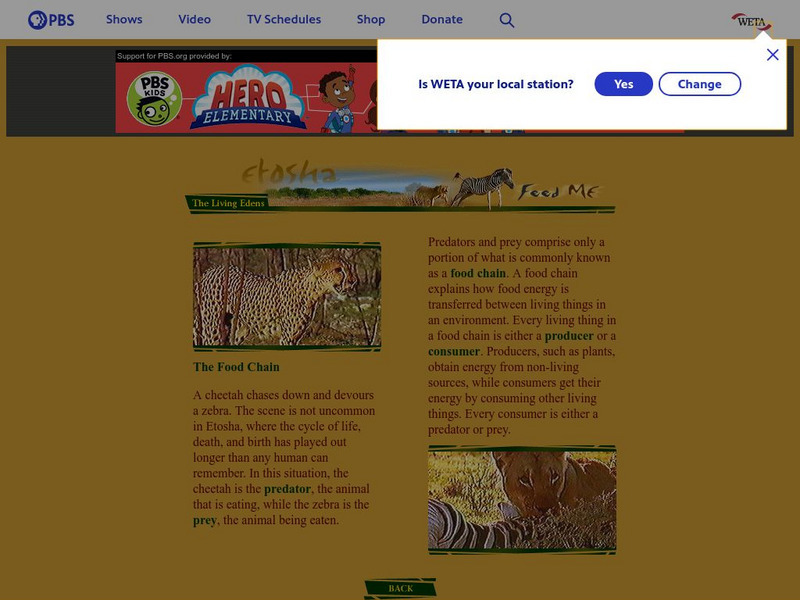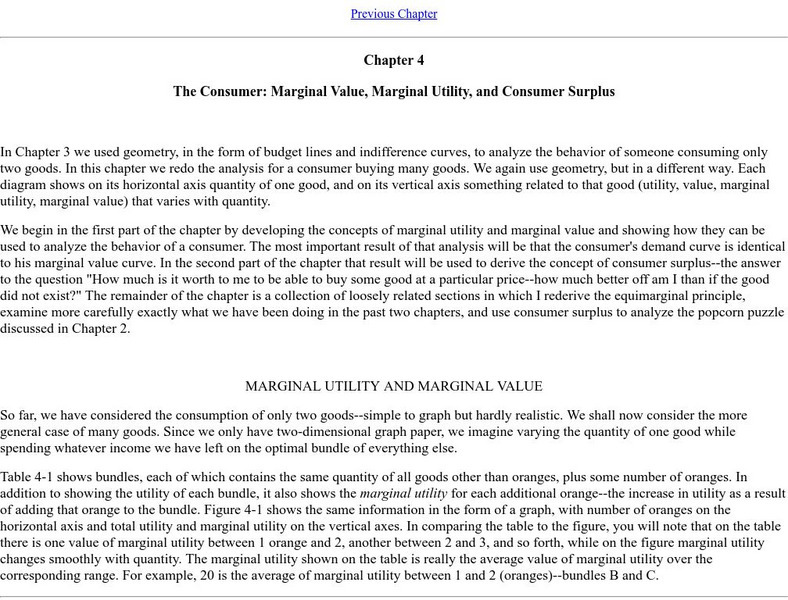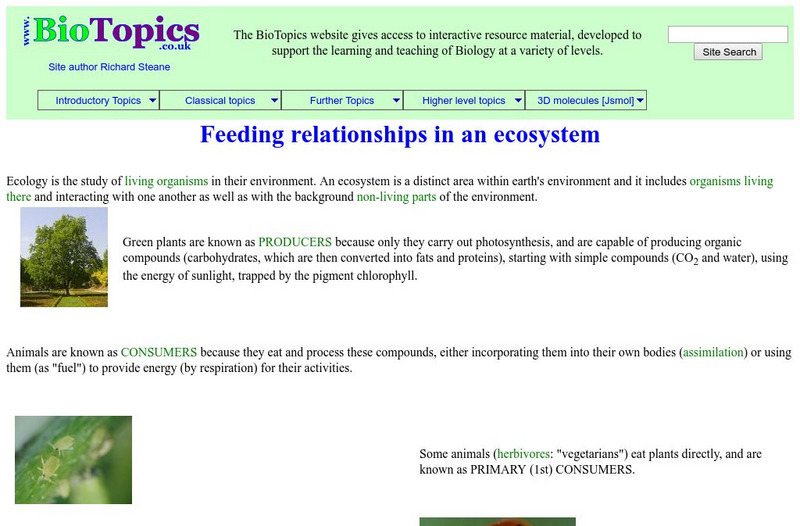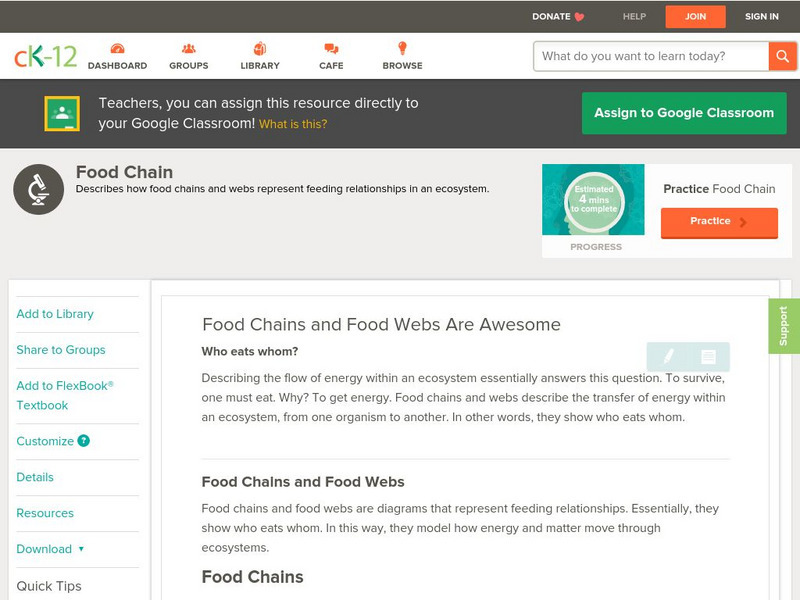Science Education Resource Center at Carleton College
Serc: Mn Step: The Flow of Energy: Balancing Ecosystems
A lesson outlining activities for a science unit where students can learn about the relationships and the flow of energy within an ecosystem. These include predator and prey, hosts and parasites, and consumers, producers, and decomposers.
PBS
Pbs: The Living Edens: The Food Chain
PBS site provides some basic information on the food chain.
Other
Marginal Value, Marginal Utility, & Consumer Surplus
"Chapter 4: The Consumer: Marginal Value, Marginal Utility, and Consumer Surplus" by David D. Friedman discusses and analyzes the consumer who buys many goods.
Other
My Science Box: Food Chains
Learners will use a card sorting activity to construct a food chain and identify the role of organisms within that chain. The cards represent different individuals in an ecosystem and will help students begin to understand the concepts...
Sophia Learning
Sophia: Producers and Consumers: Lesson 3
This lesson will review the difference between producers and consumers, and show how both play important roles in a food web. It is 3 of 4 in the series titled "Producers and Consumers."
Sophia Learning
Sophia: Producers and Consumers: Lesson 4
This lesson will review the difference between producers and consumers, and show how both play important roles in a food web. It is 4 of 4 in the series titled "Producers and Consumers."
Bio Topics
Bio Topics: Feeding Relationships in an Ecosystem
This overview of feeding relationships illustrates to students the trophic levels of different organisms in an ecosystem. Hover the mouse over different terms to see their definitions.
Sophia Learning
Sophia: Autotrophs vs. Heterotrophs: Lesson 3
This lesson will review the difference between autotrophs and heterotrophs, and show how both play important roles in a food web. It is 3 of 4 in the series titled "Autotrophs vs. Heterotrophs."
Sophia Learning
Sophia: Producers and Consumers: Lesson 2
This lesson will review the difference between producers and consumers, and show how both play important roles in a food web. It is 2 of 4 in the series titled "Producers and Consumers."
CK-12 Foundation
Ck 12: Biology: Food Chains and Food Webs
[Free Registration/Login may be required to access all resource tools.] Describes how food chains and webs represent feeding relationships.
Sophia Learning
Sophia: Food Webs
A short lesson explaining the "web of interactions" that occur in a food web. Understand how the energy flows between autotrophs and consumers. [0:35]
Science Struck
Science Struck: Examples of Primary Consumers in the Food Chain
Explains what a primary consumer's role in a food chain is and provides examples.
Science Struck
Science Struck: Tropical Rainforest Energy Pyramid and Its Importance
Explains the roles of consumers, producers, and detrivores or decomposers and how energy flows through the different levels of the energy pyramid of a tropical rainforest.
Science Struck
Science Struck: A Bird's Eye View of the Desert Food Chain
Describes how a food chain works in a desert and how the Mojave desert food chain works in particular.
Council for Economic Education
Econ Ed Link: Lean on Me! We Depend on Each Other!
Click and drag each picture to put the steps of producing and consuming a book in the correct order.
Science Struck
Science Struck: Food Chain in the Tundra Region
Describes the characteristics of a tundra biome, how a tundra food chain compares to a tropical food chain, and what the different trophic levels look like.
Other
Explore Learning: Food Chain Gizmo
In this ecosystem consisting of hawks, snakes, rabbits and grass, the population of each species can be studied as part of a food chain. Disease can be introduced for any species, and the number of animals can be increased or decreased...












